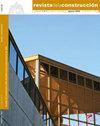碎石冲击压实桥墩作为土壤改良的一种方法
IF 1.4
4区 工程技术
引用次数: 0
摘要
本研究的目的是评估碎石冲击压实墩系统(GICPs)在改善位于伊朗Bushehr多层海岸土壤系统中3.5m厚松散粉质砂的性能。可液化砂土层在厚度为1.8 m的工程路堤层以下,层状为中等至极硬稠度的粘土层。实施碎石冲击压实墩是新一代骨料墩。采用碎石冲击压实墩改善可液化土层,提高地基承载力,减少地基沉降,以承受地面基础设施。在三角形或方形网格中制作砾石冲击压实墩的过程是使用三种类型的特殊心轴,分几个阶段在空腔中喂入和压实砾石,而不从空腔中移除土壤。本案例研究的经验表明,在有限的区域内,这些桥墩施工后立即产生人工液化物,土壤变得不稳定。大约11-14天后,土壤迅速稳定下来。在桥墩周围基质土中进行标准贯入试验结果表明,(N1)60在压实土中的量在21 ~ 30之间,平均为初始土中(N1 ~ 3)的15倍。改良后的初始土壤相对密度由25%提高到75%。因此,仅依靠桥墩的压实特性,而不依赖桥墩排水、土壤质地变化等其他主要土壤修复因素,改良后的土壤安全系数是设计中两个风险等级要求的最小安全系数的1.7-1.95倍。本文章由计算机程序翻译,如有差异,请以英文原文为准。
Gravel impact compaction piers as a method of soil improvement
The purpose of this study was to evaluate the performance of gravel impact compaction piers system (GICPs) in improving a 3.5m thick loose silty sand in a multilayer coastal soil system located in Bushehr, Iran. The liquefiable sandy soil layer was layered on clay layers with moderate to very stiff consistency and below the engineering embankment layer with a thickness of 1.8 m. Implementation of gravel impact compaction piers is a new generation of aggregate piers. Gravel impact compaction piers were used to improve the liquefiable soil layers and to increase the bearing capacity and reduce subgrade settlement to withstand surface infrastructures. The process of making gravel impact compaction piers in a triangular or square-patterned grid was created using three types of special mandrels and feeding and compacting the gravels in the cavity in several stages without removing the soil from the cavities. The experience gained in this case study showed that artificial liquefiable was created immediately after the construction of these piers in a limited area and the soil became unstable. After about 11-14 days, the soil stabilized rapidly. The results of the standard penetration test in the matrix soil around the piers showed that the amount of (N1)60 in compacted soils was in the range of 21-30 and on average 15 times the amount of (1-3) in the initial soil. Also, the relative density of the initial soil was increased from 25% to 75% after soil improvement. Accordingly, by relying merely on the compaction properties of the piers and without relying on other primary soil remediation factors, such as piers drainage and soil texture change, the safety factor of the improved soil is 1.7-1.95 times the minimum required according to the two risk levels in the design.
求助全文
通过发布文献求助,成功后即可免费获取论文全文。
去求助
来源期刊

Revista de la Construccion
工程技术-工程:土木
CiteScore
2.30
自引率
21.40%
发文量
0
期刊介绍:
The Journal of Construction is aimed at professionals, constructors, academics, researchers, companies, architects, engineers, and anyone who wishes to expand and update their knowledge about construction. We therefore invite all researchers, academics, and professionals to send their contributions for assessment and possible publication in this journal. The publications are free of publication charges.
OBJECTIVES
The objectives of the Journal of Construction are:
1. To disseminate new knowledge in all areas related to construction (Building, Civil Works, Materials, Business, Education, etc.).
2. To provide professionals in the area with material for discussion to refresh and update their knowledge.
3. To disseminate new applied technologies in construction nationally and internationally.
4. To provide national and foreign academics with an internationally endorsed medium in which to share their knowledge and debate the topics raised.
 求助内容:
求助内容: 应助结果提醒方式:
应助结果提醒方式:


